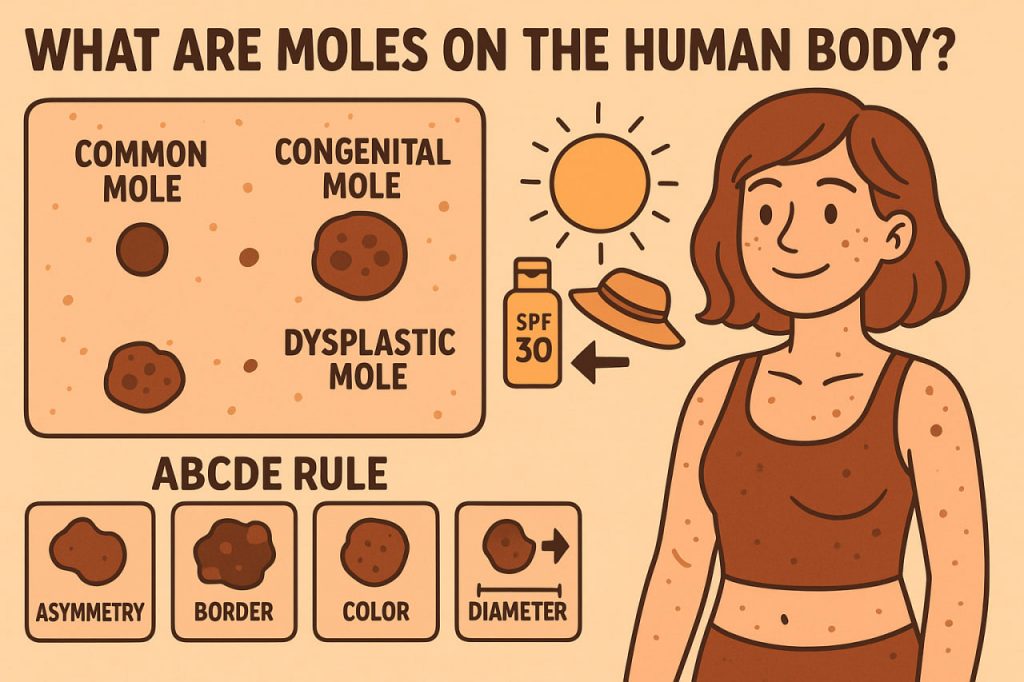Moles — medically known as melanocytic nevi — are common skin growths composed of pigment-producing cells called melanocytes. These small, usually brown or black spots can appear anywhere on the body and are typically harmless. However, certain types of moles may require medical attention, especially if they change in appearance.
How Do Moles Form?
Moles form when melanocytes, which are normally spread throughout the skin, grow in clusters instead. These clusters create visible dark spots, ranging in color from light tan to black, depending on the concentration of pigment.
Moles can be:
- Congenital: Present at birth
- Acquired: Appear during childhood or adulthood
- Atypical (Dysplastic): Larger and irregularly shaped, sometimes with varied color
Most people have 10 to 40 moles, and it is normal for some to appear or fade over time.
Types of Moles
- Common Moles
- Round, even in color and border
- Usually smaller than 5 mm
- Often appear during childhood or early adulthood
- Congenital Moles
- Present at birth
- May be larger in size
- Slightly increased risk of melanoma depending on size
- Dysplastic (Atypical) Moles
- Irregular shape or uneven color
- Can resemble melanoma
- More likely to become cancerous over time
Are Moles Dangerous?
Most moles are benign and remain unchanged for years. However, some moles may develop into melanoma, a serious form of skin cancer. The risk is higher if:
- A person has many moles (especially atypical ones)
- There is a family history of melanoma
- The skin is frequently exposed to UV radiation (sunlight or tanning beds)
When to See a Doctor: The ABCDE Rule
Use the ABCDE rule to monitor moles for signs of skin cancer:
- A – Asymmetry: One half doesn’t match the other
- B – Border: Edges are irregular, blurred, or notched
- C – Color: Varied shades of brown, black, red, or white
- D – Diameter: Larger than 6 mm (about the size of a pencil eraser)
- E – Evolving: Changes in size, shape, or color
Any sudden change or new growth should be evaluated by a dermatologist.
How to Protect Your Skin
- Avoid prolonged sun exposure
- Use broad-spectrum sunscreen with SPF 30 or higher
- Wear protective clothing and hats
- Avoid tanning beds
- Perform monthly self-checks and schedule yearly skin exams
Glossary
- Melanocyte: A cell that produces melanin, the pigment responsible for skin color.
- Nevus (Nevi): A medical term for a mole.
- Melanoma: A potentially deadly form of skin cancer.
- Benign: Non-cancerous and not harmful.
- ABCDE rule: A system for identifying suspicious skin changes.


